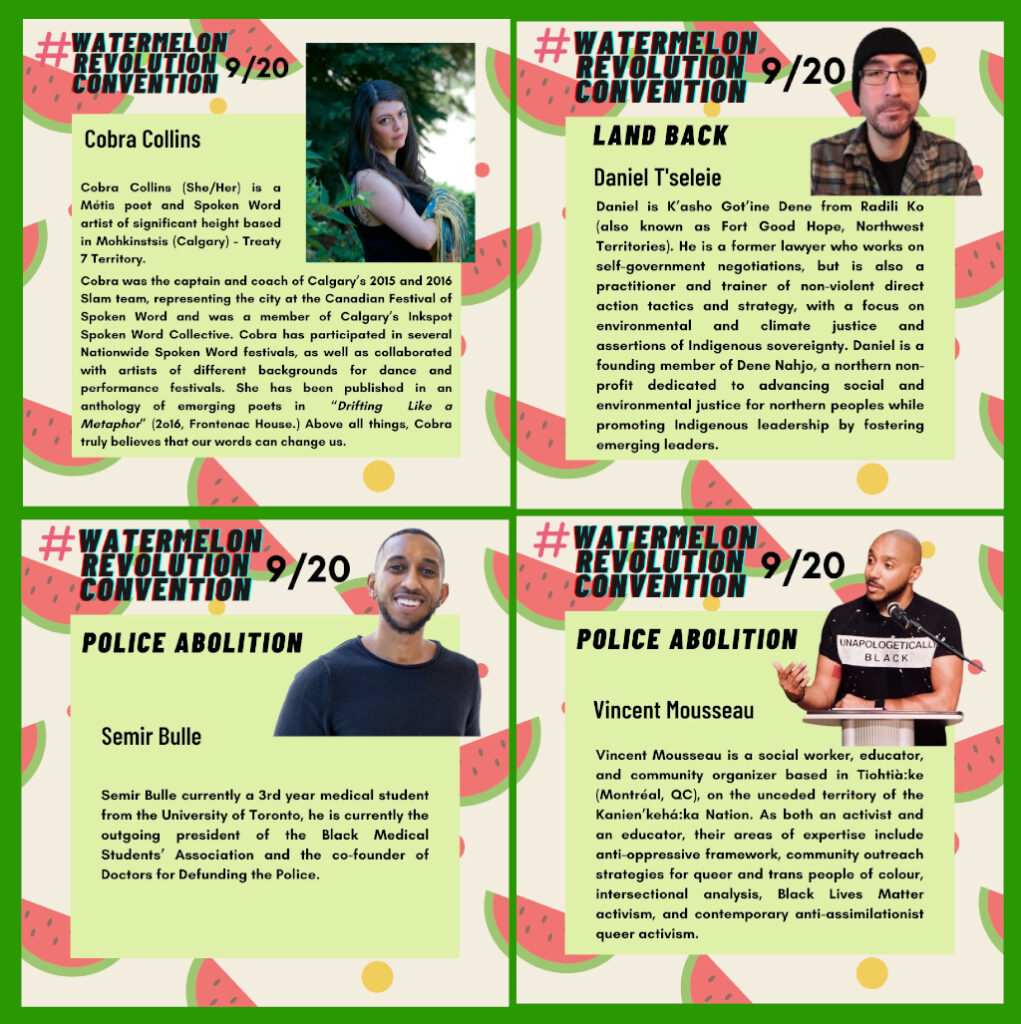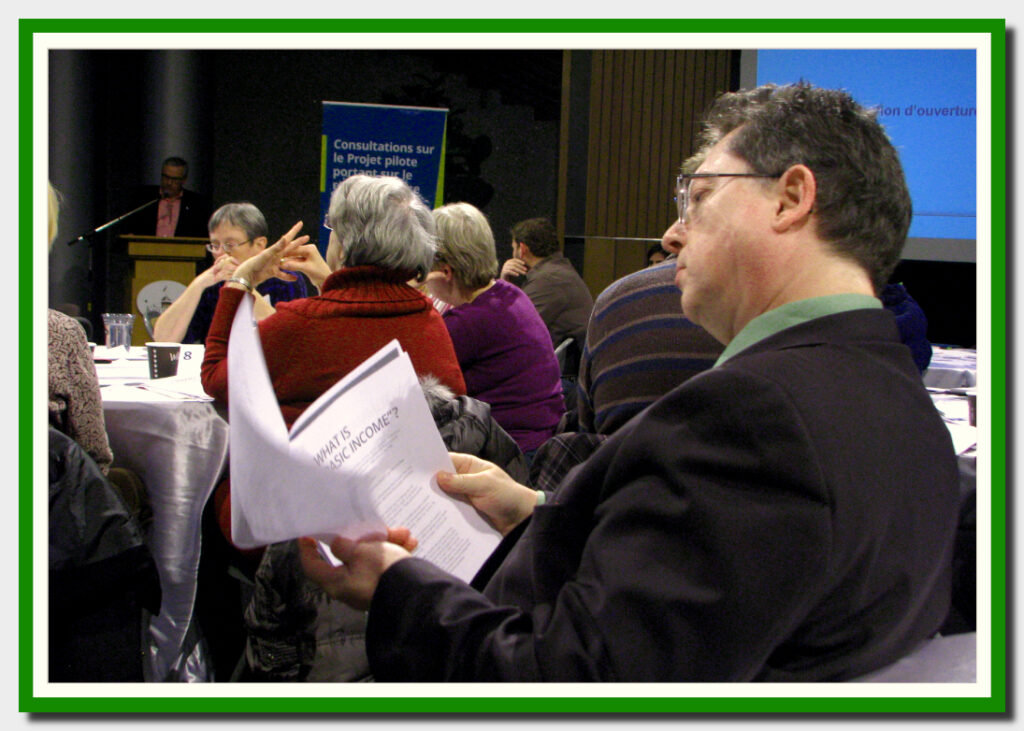 Green Party of Canada members are currently voting for the next party leader. There are eight candidates, representing a wide spectrum of ideas, policies, and philosophies. Naturally, this has polarized the Green Party membership, who really like some candidates, and really dislike some others.
Green Party of Canada members are currently voting for the next party leader. There are eight candidates, representing a wide spectrum of ideas, policies, and philosophies. Naturally, this has polarized the Green Party membership, who really like some candidates, and really dislike some others.
Because there are candidates with widely (wildly?) divergent views from some Green Party members, some of those members have decided to rank only their top choices, not wanting to give any weight to candidates they don’t like. That’s a mistake — a form of strategic voting, and it doesn’t work with ranked ballots.
If you mark only two or three candidates (or only one!) then your ballot may become exhausted after only two or three rounds of counting. Exhausted ballots are removed from counting and don’t have any further influence over the outcome of the election. It’s like First-Past-The-Post all over again, your vote is essentially wasted.
This leadership election is likely to be a very tight race, and it is likely that it will take seven rounds of counting to establish a winner. If your ballot is incomplete, you won’t be participating in those final rounds, and you’ll have no say in who becomes the next leader of the Green Party of Canada.
Especially if you have strong views against a particular candidate, it is better to rank them last on the ballot than to leave them off altogether. Ranking them last ensures your second-least favourite candidate still has a chance to edge out your least favourite candidate in the last round of counting, should it come to that.
Here’s an example of a ranked ballot election where exhausted ballots could have changed the outcome of the election, if only those ballots had been completed…
Example of a Ranked Ballot Election
where exhausted ballots could have changed the outcome
Candidates in the Ranked Ballot Example
- Alice Able
- Bertie Baker
- Charlie Canvas
- Diane Dollar
- Evan Eager
For the Green Party leadership election, the voting is done online (except for a few mail-in ballots). But for the sake of simplicity, let’s imagine we’ve all been issued paper ballots with five lines on which we can write in the names of five candidates.
In our example, one thousand voters cast their ballots, and the ballots are sorted into five piles based on the first vote position. This is the first round of voting.
| First Round Results |
|
|
|
|
|
|
|
| Alice Able |
Bertie Baker |
Evan Eager |
Diane Dollar |
Charlie Canvas |
(exhausted ballots) |
| 300 |
250 |
180 |
170 |
100 |
0 |
All the ballots have a name in the first position, so there are no exhausted ballots in the first round of counting. No candidate has a majority (50% of 1000 plus one, or 501 votes), so the ballots for the candidate with the lowest count (Charlie Canvas) are redistributed to the other candidates based on the second choice on those ballots, and the first choice is crossed out.
Here are some sample ballots from Charlie Canvas’s pile of 100. Some voters have decided to rank only certain candidates, and have not completed their ballot:
| Ballots for re-distribution |
- Charlie Canvas
- Alice Able
- Bertie Baker
- Diane Dollar
- Evan Eager
|
- Charlie Canvas
- Evan Eager
- Alice Able
- Bertie Baker
- Diane Dollar
|
- Charlie Canvas
- Alice Able
- Bertie Baker
- Diane Dollar
- Evan Eager
|
- Charlie Canvas
- Diane Dollar
- Alice Able
- Bertie Baker
- Evan Eager
|
- Charlie Canvas
- Evan Eager
-
-
-
|
In this example Charlie Canvas’s 100 ballots are redistributed, 25 to each of the remaining candidates. The ballots are counted again, in a second round:
| Second Round Results |
|
|
|
|
|
|
| Alice Able |
Bertie Baker |
Evan Eager |
Diane Dollar |
(exhausted ballots) |
| 325 |
275 |
195 |
205 |
0 |
In our example, Diane Dollar now has more votes than Evan Eager, and edges ahead.
Again, no-one has a majority, so again the ballots for the last place candidate, Evan Eager, are redistributed. The ballots with Evan Eager as first choice are redistributed to the second choice candidate, but the ballots with Charlie Canvas as first choice and Evan Eager as second choice are redistributed based on the third choice candidate.
Here are some samples from Evan Eager’s 195 ballots:
| Ballots for re-distribution |
- Evan Eager
- Alice Able
- Bertie Baker
- Charlie Canvas
- Diane Dollar
|
- Evan Eager
- Diane Dollar
- Charlie Canvas
- Alice Able
- Bertie Baker
|
- Evan Eager
- Diane Dollar
- Alice Able
- Bertie Baker
- Charlie Canvas
|
- Charlie Canvas
- Evan Eager
- Alice Able
- Bertie Baker
- Diane Dollar
|
- Charlie Canvas
- Evan Eager
-
-
-
|
Incomplete ballots that list only Charlie Canvas and Evan Eager are “exhausted”, and removed from the count. Exhausted ballots can no longer influence the outcome of the election.
Evan Eager’s 195 ballots are redistributed: 50 to Alice Able, 75 to Bertie Baker, 50 to Diane Dollar, and 20 are exhausted:
| Third Round Results |
|
|
|
|
|
| Alice Able |
Bertie Baker |
Diane Dollar |
(exhausted ballots) |
| 375 |
350 |
255 |
20 |
Because there are 20 exhausted ballots there are now only 980 valid ballots, so a majority is now 50% of 980 plus one, or 491. No candidate has a majority.
This time, Diane Dollar’s ballots are redistributed, some to the second choices where Diane Dollar was first choice, some to the third choice where Charlie Canvas or Evan Eager were first and second choices, and even some to the fourth choice where Charlie Canvas, Evan Eager, and Diane Dollar were first, second and third choices:
| Ballots for re-distribution |
- Diane Dollar
- Alice Able
- Bertie Baker
- Charlie Canvas
- Evan Eager
|
- Diane Dollar
- Bertie Baker
- Charlie Canvas
- Alice Able
- Evan Eager
|
- Diane Dollar
- Evan Eager
- Alice Able
- Bertie Baker
- Charlie Canvas
|
- Charlie Canvas
- Diane Dollar
- Evan Eager
- Alice Able
- Bertie Baker
|
- Charlie Canvas
- Evan Eager
- Diane Dollar
-
-
|
Diane Dollar’s 255 ballots are redistributed (80 to Alice Able, 120 to Bertie Baker, 55 exhausted), and the redistributed ballots are counted a fourth time:
| Fourth Round Results |
|
|
|
|
| Alice Able |
Bertie Baker |
(exhausted ballots) |
| 455 |
470 |
75 |
With 75 exhausted ballots a majority is now 50% of 925 plus one, or 463.
…and now there’s a majority! Bertie Baker has 470 votes, 15 more than Alice Able’s 455.
Note that the difference between the first place and second place is less than the number of exhausted ballots. If the people who cast those exhausted ballots had completed the entire ballot, it is entirely possible that the outcome of this election would have been different!
Alternate outcome
If the 20 exhausted ballots in the Third Round had had a third-place ranking for Alice Able, then Evan Eager’s 195 ballots would have been redistributed with 70 to Alice Able, 75 to Bertie Baker, 50 to Diane Dollar, and 0 exhausted. The outcome would have been:
| Alternate Third Round Results |
|
|
|
|
|
| Alice Able |
Bertie Baker |
Diane Dollar |
(exhausted ballots) |
| 395 |
350 |
255 |
0 |
Now, in the fourth round when Diane Dollar’s ballots are redistributed the same way (80 to Alice Able, 120 to Bertie Baker, 55 exhausted) the results are drastically different. With only 55 exhausted ballots the majority is 50% of 945 plus one, or 473, and now Alice Able is the winner!
| Alternate Fourth Round Results |
|
|
|
|
| Alice Able |
Bertie Baker |
(exhausted ballots) |
| 475 |
470 |
55 |
Conclusion
It is very important to compelete your ranked ballot. Even a small difference in third- or fourth place rankings can make a significant difference to the election outcome!
One final observation that has nothing to do with the voting system: I’ll be casting my ballot at the last possible moment, just in case one of the leadership candidates makes a profound announcement in the last few hours that changes my ranking of that candidate. One vote, one ranking position can make all the difference!
–Bob.
Bob Jonkman was the Green Party of Canada candidate for Brantford-Brant in 2019, has been a member of Fair Vote Canada since 2007, and has served on the Executive board of Fair Vote Waterloo between 2010 and 2020.

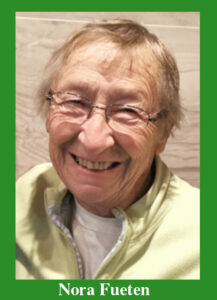 I was saddened to hear that Nora Fueten passed away on 10 January 2024.
I was saddened to hear that Nora Fueten passed away on 10 January 2024.

 Karleigh Csordas
Karleigh Csordas
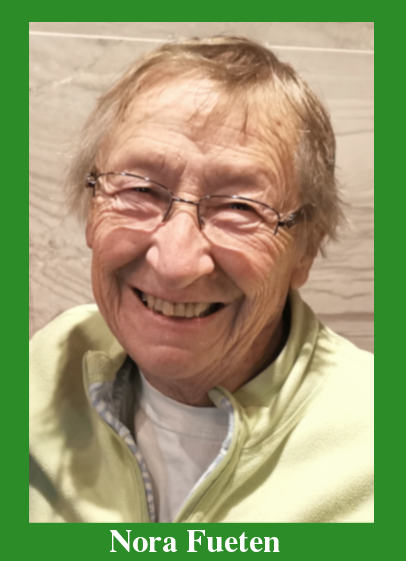
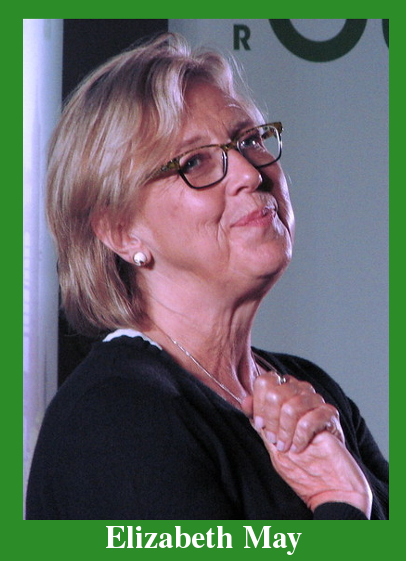





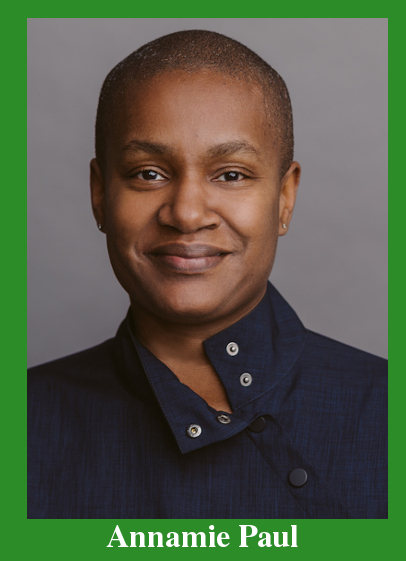

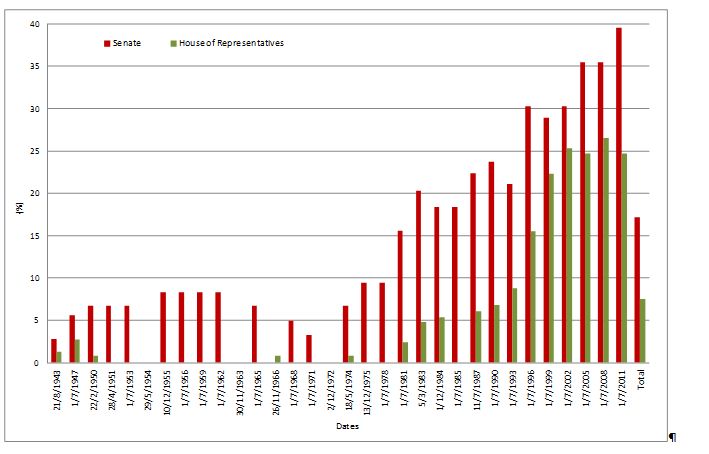

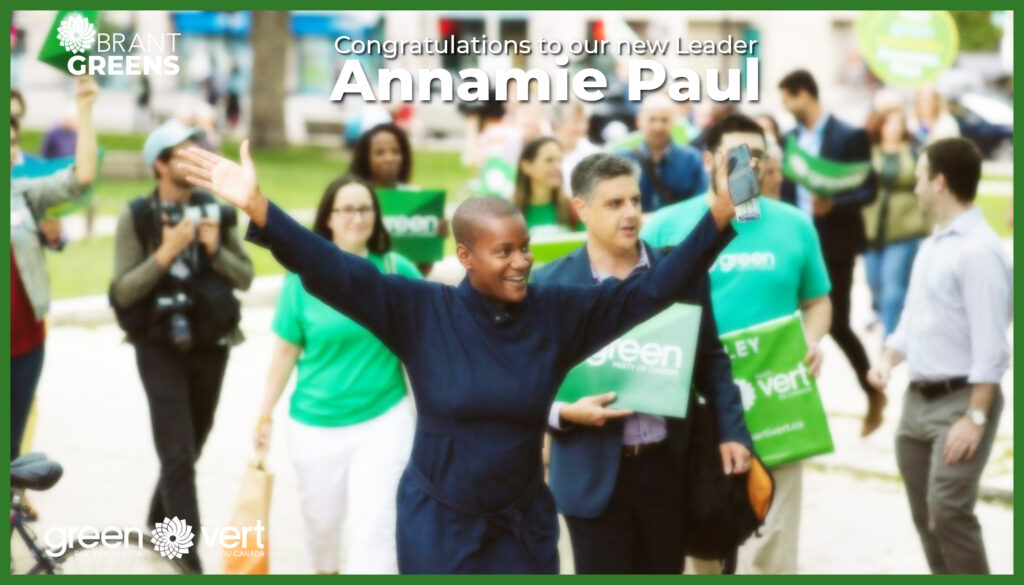
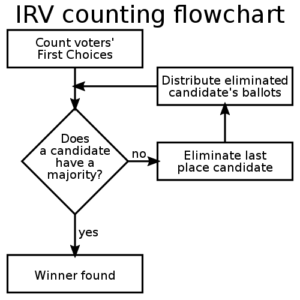
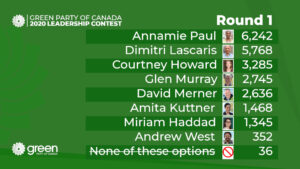
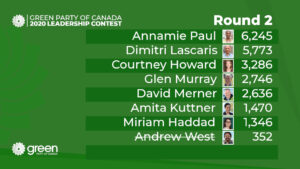
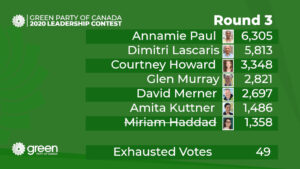
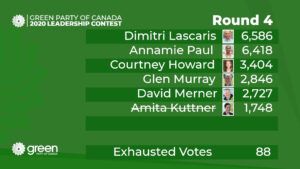
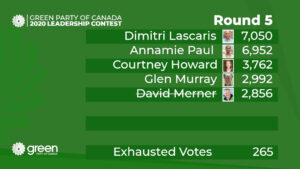
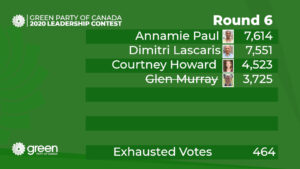
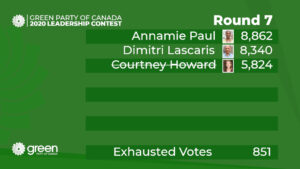
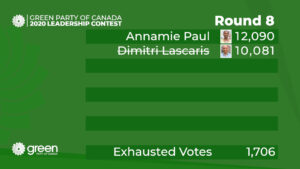


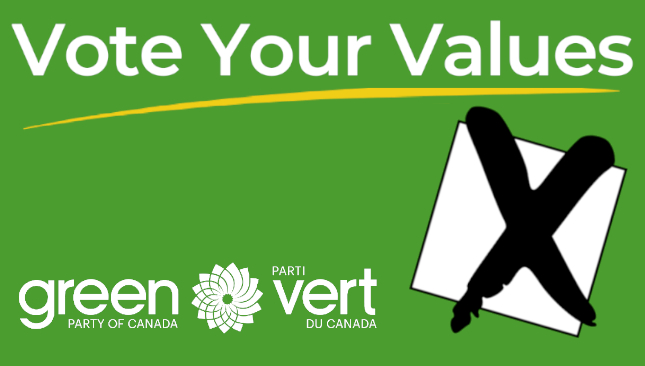
 Green Party of Canada members are currently
Green Party of Canada members are currently 



